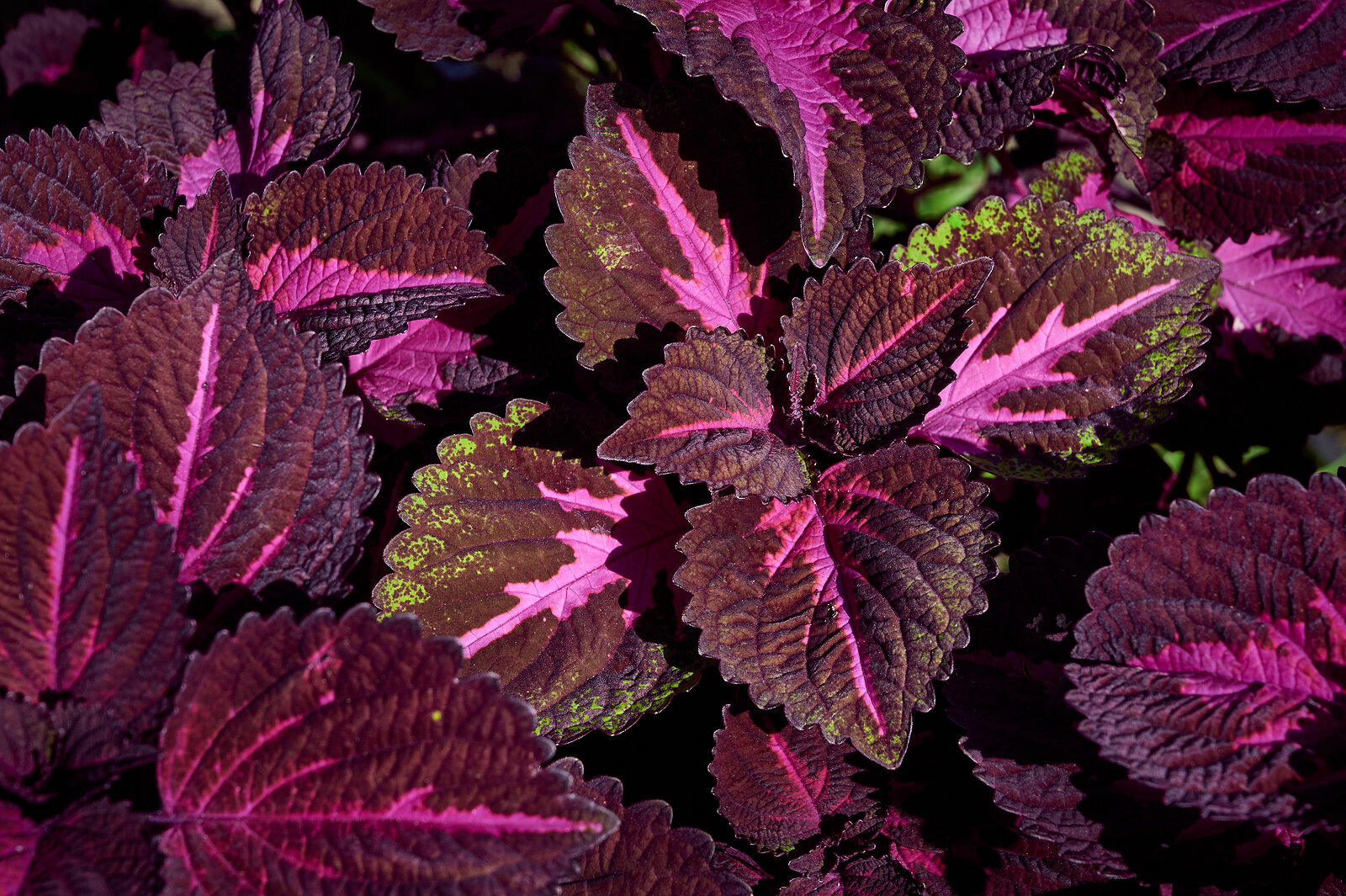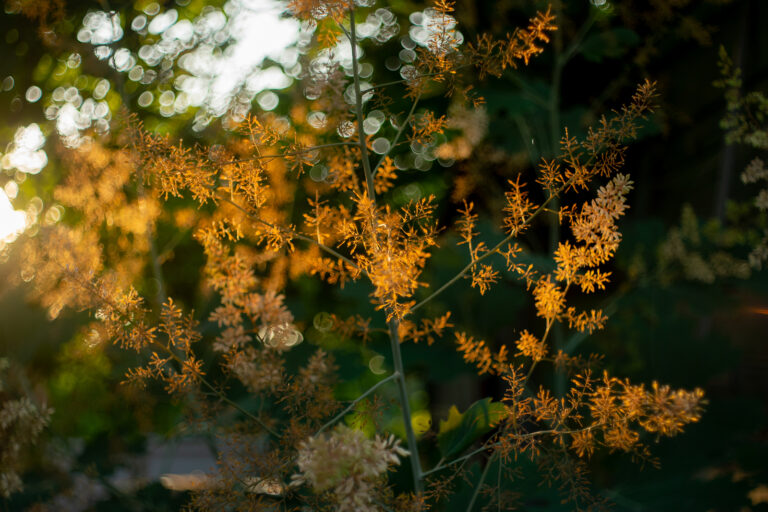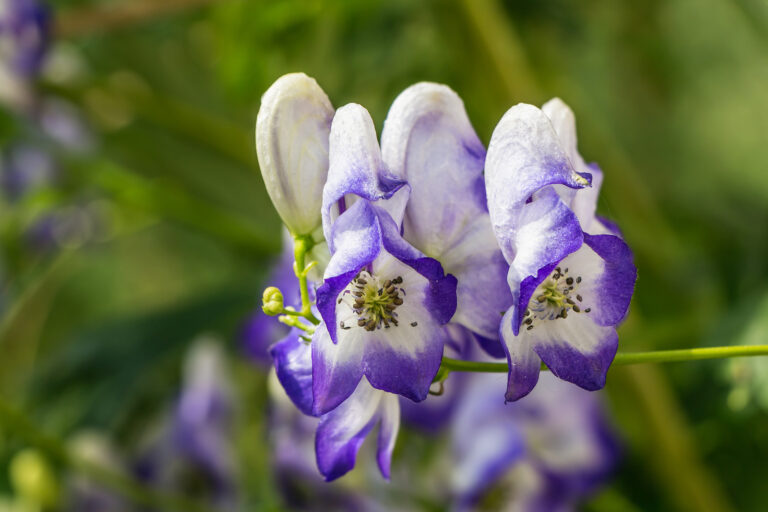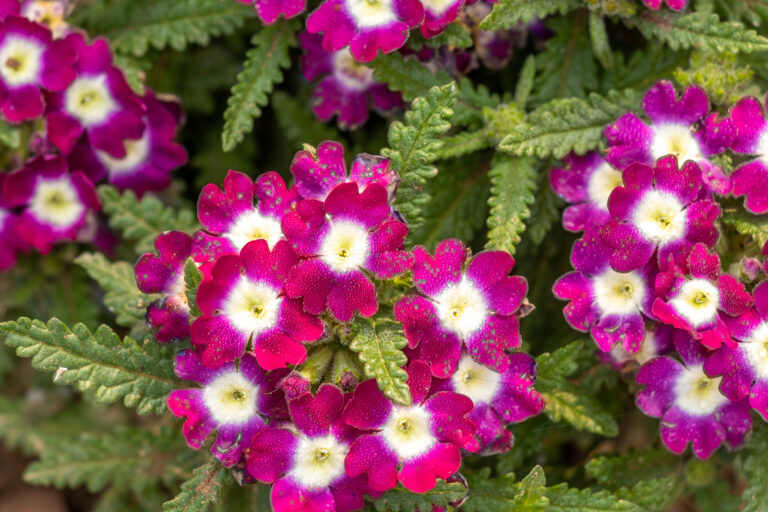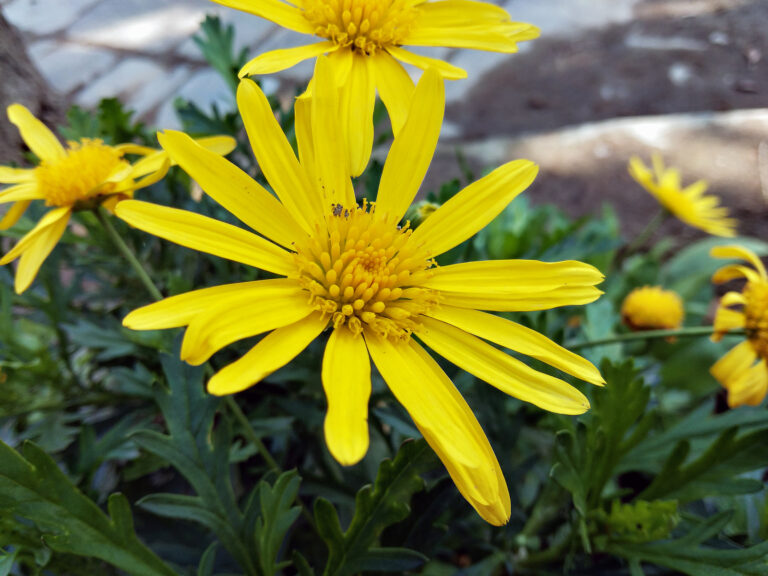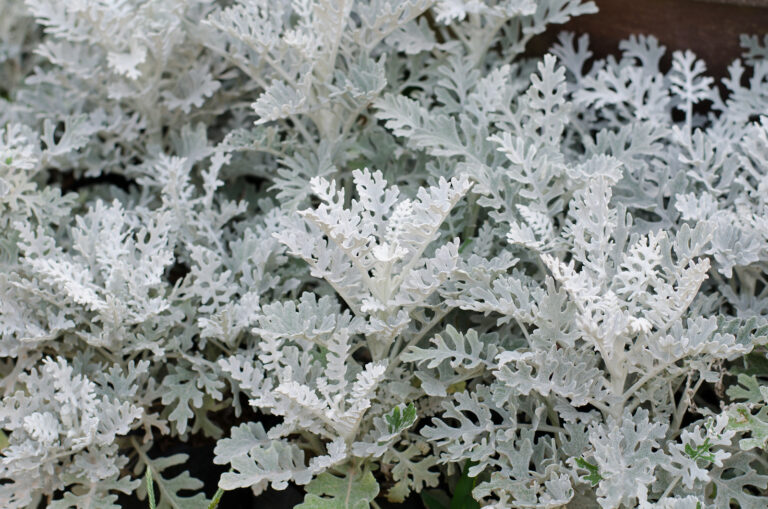How to Grow and Care for Coleus
Coleus bears brilliantly colored leaves in swirls and stripes. Leaf colors include green, chartreuse, yellow, buff, salmon, orange, red, purple, and brown–and often many of these colors on one leaf.
Coleus also bears blue flowers which appear in whorls. Many gardeners consider the flowers all but an afterthought next to the leaves. Gardeners often pinch away the flowers so as not to distract them from the leaves.
Coleus species are members of the Soleonostemon genus. Coleus is the former botanical name for the genus. (Coleus and Solenostemon are the same.)
Use Solenostemon in summer borders and as indoor or outdoor container plants. Pinch stems to encourage and compact growth.
Solenostemon is a genus of about 60 species of subshrubby perennials. Solenostemon is native to tropical forests in Africa and Asia.
Flower Garden Success Products at Amazon:
- Wildflower Seed Mix Attracts Hummingbirds and Butterflies
- Eden Brothers All Perennial Seed Mix
- 10 pcs Stainless Steel Garden Hand Tool Set
- Gorilla Cart 4 Cu. Ft, 300-pound Capacity
- Neem Bliss 100-% Cold Pressed Neem Oil
- Safer Brand Insect Killing Soap
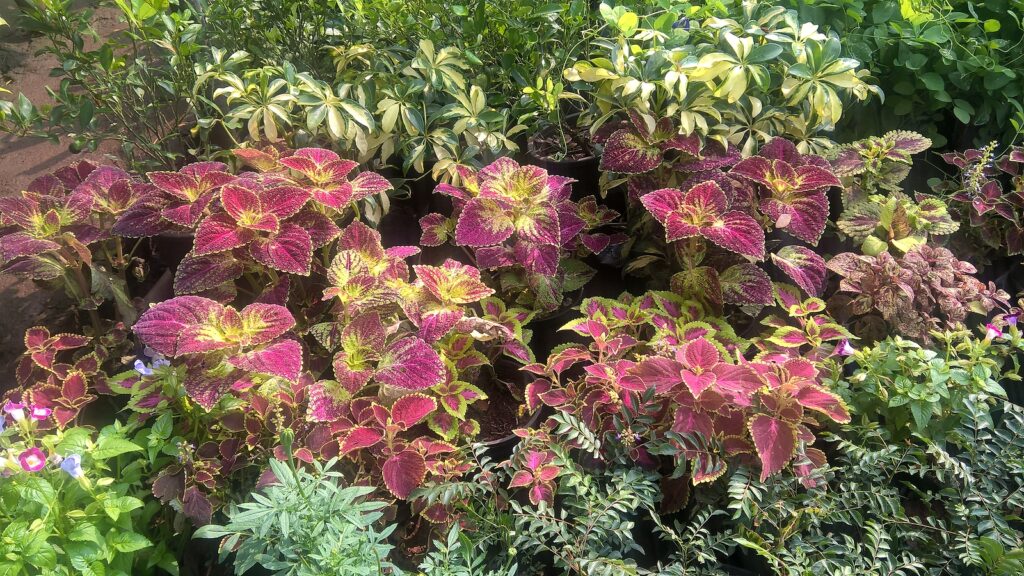
Get to know Solenostemon
- Plant type: Perennial is usually grown as an annual
- Growing zones and range: Zones 9 to 11
- Hardiness: Hardy to Zone 9
- Height and width: Up to 3 feet (.9m) tall and wide
- Foliage: Opposite, rounded, generally toothed leaves on square stems, in various colors.
- Foliage colors: Green, chartreuse, yellow, buff, salmon, orange, red, purple, and brown–often with several colors on each leaf
- Flowers: Tiny, inconspicuous, two-lipped, tubular, blue or white flowers in spikelike clusters.
- Bloom time: Usually grown for the colorful foliage.
- Uses: Bedding, potted plant
- Garden companions: Silvermound (Artemisia schmidtiana)
- Common name: Coleus
- Botanical name: Solenostemon
- Family name: Lamiaceae
- Origin: Tropical forests in Africa and Asia
Where to plant Solenostemon
- Plant Solenostemon in a sheltered spot with light shade, although it tolerates some sun.
- A site protected from the wind is best, and in areas, with hot summers the plants benefit from shade during the hottest part of the day.
- Plant Solenostemon in deep, rich, moist, well-drained soil.
Solenostemon uses
- Mass Solenostemon to add color to a lightly shaded border.
- Plant Solenostemon in containers and hanging baskets.
- Placement makes a difference in coloration; too much shade can mute colors; too much sun can bleach the color out of leaves.
When to plant Solenostemon
- Plant Solenostemon seed in early spring.
- Sow Solenostemon indoors 10 to 12 weeks before the last spring frost date at 65° to 70° degrees Fahrenheit (18-71°C). Germination takes 2 to 3 weeks.
- In areas with very long summers—Zone 9-11—seeds can be sown outdoors after the last frost date.
- Set Solenostemon out after frosts are over.
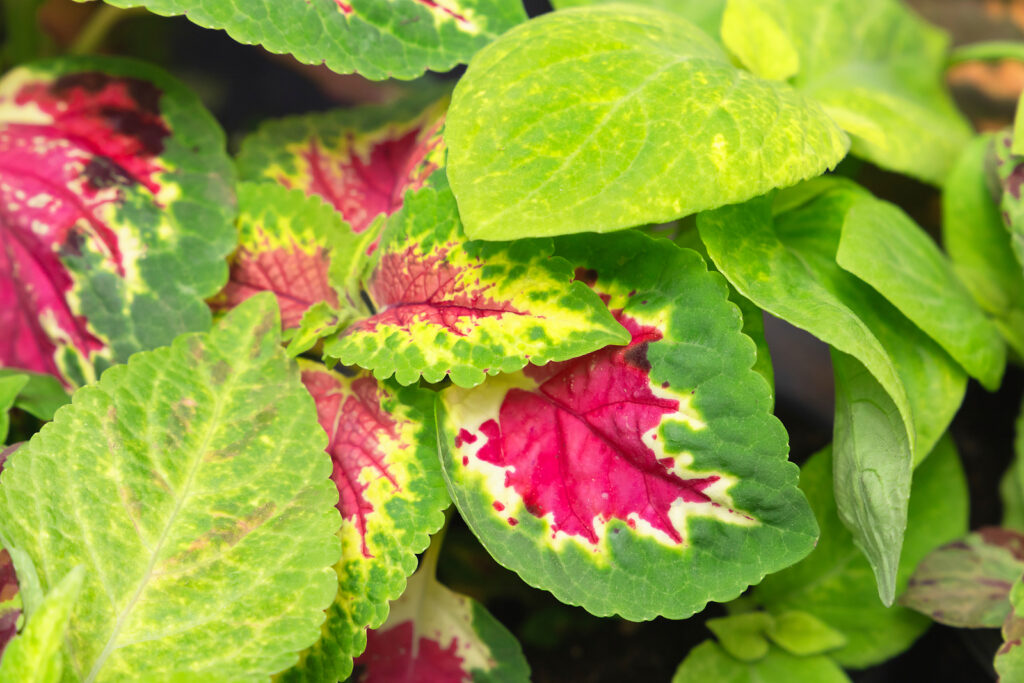
Planting and spacing Solenostemon
- When sowing Solenostemon, just press the seeds into the soil surface, as light is required for germination.
How to water and feed Solenostemon
- Keep Solenostemon moist.
- Water container growing Solenostemon regularly, and feed at least monthly.
- Feed Solenostemon with an all-purpose organic fertilizer in spring.
How to care for Solenostemon
- Solenostemon is more attractive if kept pinched back.
- Pinch Solenostemon to encourage branching.
- Remove Solenostemon flowers when they appear.
Growing Solenostemon as a houseplant
- Solenostemon requires bright light; it can also be grown under fluorescent light.
- Solenostemon needs average room temperature and high humidity.
- The soil should be kept evenly moist but not soggy.
- Fertilizers should be applied regularly in spring and summer.
Solenostemon pests and diseases
- Solenostemon has few disease problems.
- Solenostemon is susceptible to attack by scale, mealybugs, and slugs.
Good Products for Seed Starting Success at Amazon:
- Jump Start Germination Station w/Heat Mat Tray, 72-Cell Pack, Dome
- Espoma Seed Starting Mix
- 200 Count- Jiffy 7 Peat Soil Seed Starting Plugs
- Seed Starter Kit with Humidity Dome (120 Cells Total Tray)
- AgrobriteT5 Fluorescent, 2-Foot, Grow Light System
Solenostemon propagation
- Start seeds indoors 10 weeks before the last frost; seeds germinate uncovered in 10 days at 70° to 75°F (21°-24°C)
- Take Solenostemon cuttings of cultivars.
- Take Solenostemon cuttings in late summer for over-wintering, or from over-wintering plants in winter to early spring, to grow plants from the garden.
- Solenostemon cuttings will root in water, sand, or any conventional medium for cuttings, such as a 50-50 mix of peat moss and perlite.
- Since young Solenostemon are the most vigorous—the older ones are woodier—consider growing new ones from cuttings taken annually or every other year.
- Wait to transplant Solenostemon cuttings until temperatures remain above 50° degrees Fahrenheit (10°C).

Solenostemon varieties to grow
- Solenostemon scutellarioides, Coleus, Flame nettle, Painted nettle, formerly Coleus blumeii var. verschaffeltii, a bushy, 1-3 feet (.3-.9m) tall tender perennial with leaves that are usually toothed and sometimes heart-shaped at the base. Cultivars come with leaves in a mix of colors and patterns, usually with two or more colors as edgings, irregular, or veining. Colors include green, cream, chartreuse, maroon, purple-black, red, orange, and pink. Bears 6 inches (15.2cm) tall spikes of .5 inch (1.3cm) long, pale purple-blue or white flowers, which are usually removed.
- ‘Cinders’ has green leaves with red and yellow spots.
- ‘India Frills’ has small, lobed green leaves with pinkish-purple and yellow markings.
- ‘Pineapple Queen’ bears yellow-green leaves with brown-purple markings.
- ‘Purple Emperor’ has ruffled, dark purple leaves with lacy margins.
- ‘Red Trailing Queen’ has deep red-purple leaves with a thin green outline.
- Wizard Series cultivars are compact, 8-10 inches (20.3-25.4cm) tall plants grown from seed.
Coleus frequently asked questions
Q: Can I grow coleus from seeds?
A: Yes. Coleus is easily started from seeds. Sow seed indoors any time of the year. To set plants outdoors in spring, start seeds 10 to 12 weeks before the last frost. Do not cover seeds; they need light to germinate. Germination usually occurs in about one week. Plants are ready for transplanting in another two weeks.
Q: Can coleus be rooted from cuttings?
A: Yes. Coleus are easily and rapidly rooted from cuttings. Take stem cuttings two to three inches long and root them in water, sand, vermiculite, or a regular rooting mix.
Q: What outdoor conditions are needed for growing coleus in the garden?
A: Coleus will grow in a warm, frost-free garden. Coleus like partial to full shade and humus-rich, moist soil. The bright leaf colors will fade in full sun.
Q: Should I remove coleus flowers when they appear in late summer?
A: You can. Some gardeners feel the flowers distract from the colorful foliage. If you remove the flowers, the foliage will remain more colorful into the fall.
Related Articles:

